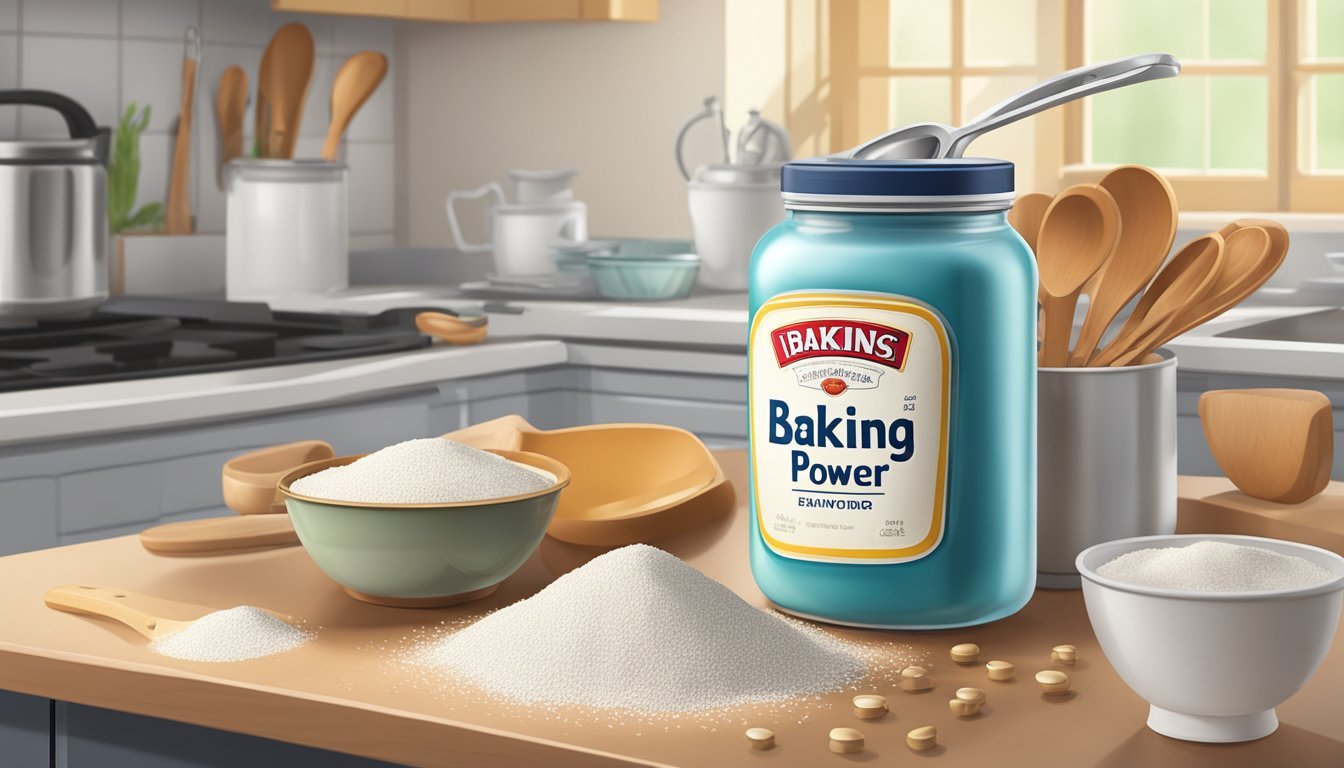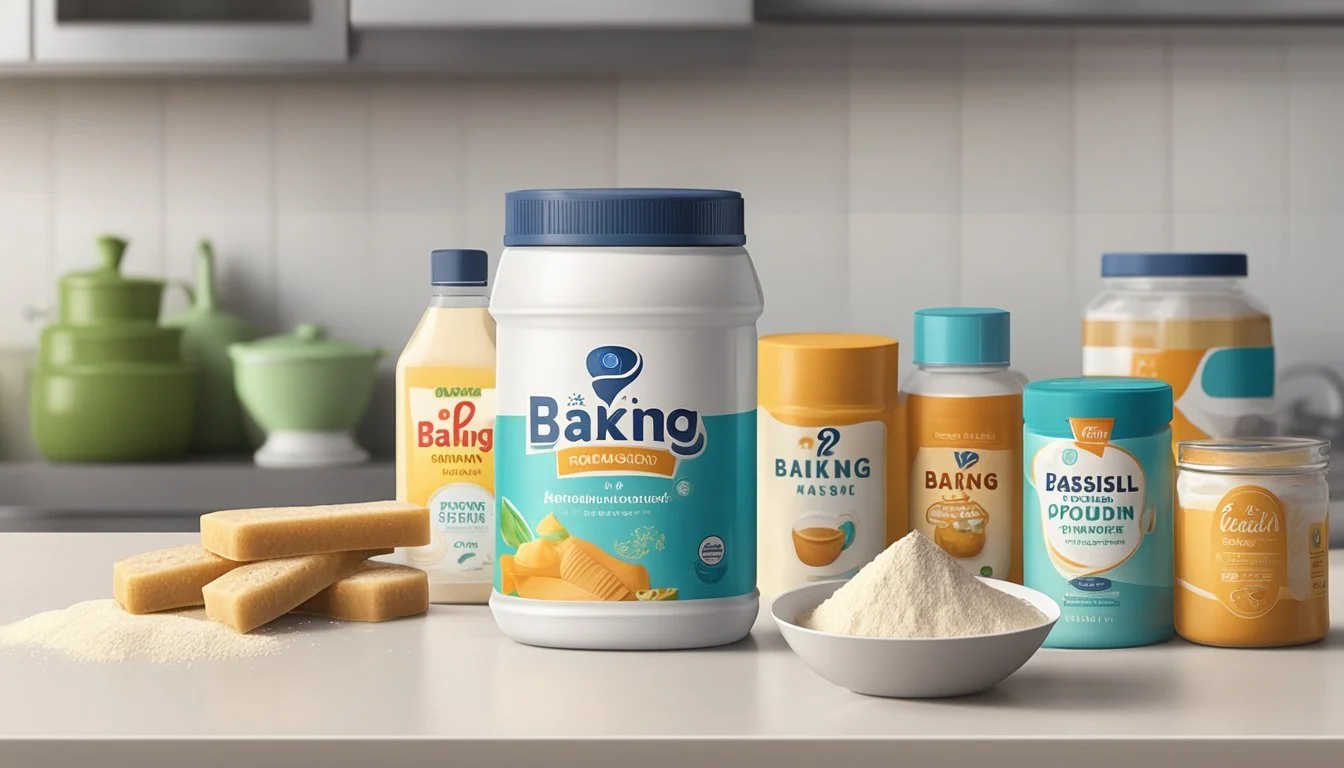Does Baking Powder Go Bad?
Shelf Life and Storage Tips
Baking enthusiasts know that the right ingredients can make or break a recipe. One common concern in the kitchen is whether baking powder goes bad. Yes, baking powder can lose its effectiveness over time, especially if not stored properly.
Baking powder typically lasts for 18 to 24 months in unopened containers and 3 to 6 months after opening. If stored in a humid environment, its shelf life can shorten significantly. To test its potency, mix a teaspoon of baking powder with hot water; vigorous bubbling indicates it's still good.
Proper storage is crucial to maintaining the effectiveness of baking powder. It should be kept in a cool, dry place, away from heat and moisture. This will help ensure that your baked goods rise beautifully each time.
Understanding Baking Powder
Baking powder is a leavening agent used in baking to help doughs and batters rise. It typically consists of baking soda (sodium bicarbonate), an acid like cream of tartar, and a moisture-absorbing substance such as cornstarch.
Types of Baking Powder
There are two main types of baking powder: single-acting and double-acting.
Single-acting baking powder reacts and releases carbon dioxide gas when it is wet.
Double-acting baking powder reacts in two phases: first when wet and again when exposed to heat.
How It Works
When baking powder is mixed into a batter, the acid and base react to produce carbon dioxide gas. This gas forms bubbles in the dough or batter, causing it to rise. The cornstarch in baking powder serves to keep the mixture dry and stable during storage.
Storage Tips
To maintain its effectiveness, baking powder should be stored in a cool, dry place and kept in an airtight container. Exposure to moisture and heat can cause it to lose potency.
Testing Baking Powder Freshness
You can test if baking powder is still good by mixing a small amount with hot water. If it bubbles vigorously, it is still effective. Using baking powder that has gone bad will result in baked goods that do not rise properly.
Shelf Life Basics
Baking powder does have a finite shelf life. Its effectiveness declines over time, influenced by storage conditions and factors like moisture and air exposure.
Expiration Date
The shelf life of baking powder typically ranges from 18 to 24 months in unopened containers. Once opened, it is generally effective for about 3 to 6 months. Labels often display a "best before" date, indicating the period during which the product is expected to perform optimally.
To check if baking powder is still good, look for signs of clumping or caking, which can indicate moisture exposure. An easy test is to mix a small amount with hot water; if it bubbles vigorously, it’s still potent.
Factors Affecting Potency
Several factors can impact the potency of baking powder. Moisture and air exposure are primary concerns. Store baking powder in a cool, dry place to maintain its effectiveness. Avoid keeping it near stoves or other heat sources, as heat can accelerate its degradation.
Exposure to sunlight can also reduce its effectiveness. Using airtight containers can help protect against moisture and air infiltration, extending its usability and ensuring that your baked goods rise properly.
Proper Storage Techniques
Proper storage of baking powder ensures its longevity and effectiveness. Critical factors include keeping it in a cool and dry place, and in an airtight container.
Ideal Conditions
Baking powder should be stored in a cool and dry place to retain its potency. Temperature fluctuations can cause condensation that clumps baking powder. Therefore, a pantry or kitchen cabinet is ideal.
Exposure to moisture and heat should be minimized. An airtight container helps protect it from humidity and pantry bugs. Some prefer to store it in the refrigerator, but this isn't necessary and can introduce condensation if not handled properly.
Preventing Spoilage
Keep the package tightly sealed when not in use. Transferring baking powder to an airtight container prevents contaminants from affecting its quality. Regularly check the baking powder for any clumps or signs of moisture, which may indicate spoilage.
Label the container with the purchase date to track its age and replace it after about a year. Regular cleaning of the storage area will also help prevent infestation by pantry bugs.
Assessing Baking Powder Quality
Baking powder can lose its effectiveness over time. Knowing how to identify if it is still good is crucial for successful baking. This assessment involves both visual inspection and simple tests.
Visual and Physical Signs
Check the expiration date on the packaging first. Even if unopened, baking powder doesn't last indefinitely.
Inspect the contents for any signs of moisture. Clumping or discoloration usually means the baking powder has been exposed to moisture. This can affect its potency.
Keep baking powder in an airtight container to avoid exposure to humidity. Humidity can reduce its effectiveness faster than dry conditions.
Performing a Freshness Test
To perform a freshness test, place a teaspoon of baking powder in a cup of hot water. The water must be hot for an accurate test.
If the baking powder is still active, it will produce vigorous bubbles. The presence of bubbles indicates that it can still create the necessary rise in baked goods.
No reaction or weak bubbling suggests it's time to replace the baking powder. Always test before using in recipes if there's any doubt about its freshness.
Using and Consuming Baking Powder
Baking powder is a key ingredient for many recipes, but its effectiveness can diminish over time. Understanding when and how to use it, even when expired, can make a big difference in your baked goods.
Baking With Expired Baking Powder
Expired baking powder may not provide the same rising effect as fresh powder. When baking with expired powder, expect a denser texture and less rise in your baked goods.
A simple test to check the potency: mix a teaspoon of baking powder with a third cup of hot water.
If it fizzes vigorously, it can still be useful.
In some recipes, you might need to adjust portions or add extra to compensate for reduced potency.
Incorporating Into Recipes
When incorporating baking powder into recipes, always sift it with other dry ingredients to ensure even distribution.
Increased moisture in batter will activate the powder, but it's crucial to bake immediately after mixing to get the best rise.
Always store baking powder in a cool, dry place to extend its shelf life.
For specific recipes requiring precision, using fresh baking powder is advisable to achieve the desired texture and rise.
Alternatives and Substitutions
Baking powder, a common ingredient in many recipes, can sometimes run out at inconvenient times. Thankfully, there are several substitutes readily available in most kitchens.
Baking Soda and Acidic Ingredients
Baking soda paired with an acid such as vinegar, lemon juice, or buttermilk can substitute baking powder. For each teaspoon of baking powder, use:
¼ teaspoon baking soda
½ teaspoon vinegar or lemon juice
½ cup buttermilk or yogurt
Molasses and Baking Soda
Molasses combined with baking soda is another effective alternative. Use:
1 teaspoon baking soda
1 cup molasses
Club Soda
Club soda can work as a leavening agent in recipes like pancakes. Simply replace the liquid element in the recipe with an equivalent amount of club soda.
If you have self-rising flour, it already contains baking powder. Substitute the regular flour and baking powder in the recipe with self-rising flour.
When making these substitutions, it's crucial to account for the added liquid or acidic component to maintain the recipe's balance. Each of these substitutes can effectively replace baking powder when needed.



